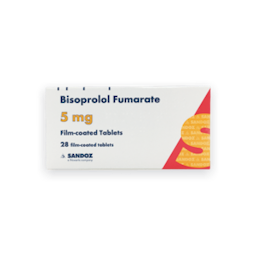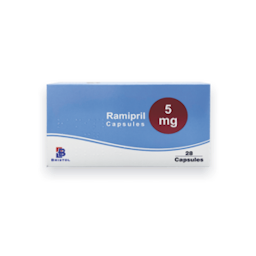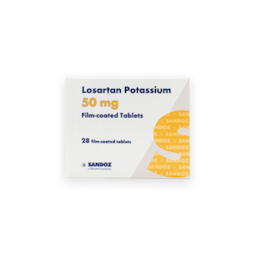‘Dietary Approaches to Stop Hypertension’ – or DASH – is a long-term approach to healthy eating. It was created to help improve or prevent high blood pressure, which affects around one third of UK adults.
High blood pressure is linked with a higher risk of various health conditions like heart disease, stroke, and kidney failure. However, the good news is that it’s one of the most preventable and treatable health conditions.
And since scientific research has revealed that diet plays a role in the development of high blood pressure, the DASH diet has become one of the most popular dietary strategies to help prevent and reduce it.
But how does it work? Here, we’ll explain the ins and outs of the DASH diet, how to follow it, its impact on blood pressure, and its various other health benefits.
What is the DASH diet?

The DASH diet is a dietary approach used to treat or prevent hypertension (high blood pressure). As a result, it can also help to reduce the risk of health conditions like heart disease and stroke.
Researchers initially created the diet after noticing that high blood pressure was much less common in people who followed plant-based diets. Therefore, the DASH diet encourages people to eat plenty of fruits, vegetables, whole grains, and foods rich in calcium, potassium, and magnesium, which are known to lower blood pressure.
For example, various studies have suggested that potassium reduces blood pressure in people with hypertension because it reduces the effects of sodium (salt).
Moderate intake of lean protein like fish, skinless chicken, and beans is also encouraged, but red meat, salt, added sugars, and saturated fat is limited.
Salt, in particular, is a major contributor to high blood pressure. And while as a nation we’ve reduced our salt intake, research shows that the average UK adult still eats around 8.1g of salt per day. This is almost one-third more than the recommended 6g per day.
With that said, there are now two versions of the DASH diet: the regular DASH diet and the lower-salt DASH diet. The regular version recommends eating no more than 5.75g of salt, while the lower-salt version is capped at 3.75g.
Get high blood pressure prescriptions from Rest Less Online Doctor
Skip long waits for a doctor’s appointment. With Rest Less Online Doctor, you can access a range of high blood pressure treatments. Order online and you could receive your medication the next day.
Rest Less Online Doctor powered by evaro. Find out more.
What does following the DASH diet involve?

Following the DASH diet day-to-day generally means eating…
- Fruit and vegetables – like apples, strawberries, bananas, broccoli, and carrots
- Unsalted nuts – including walnuts and almonds
- Legumes and seeds – like kidney beans, lentils, and sunflower seeds
- Whole grains – like brown rice, wheat pasta, and oats
- Fat-free and low-fat dairy products – such as reduced-fat cheese and skimmed milk
- Lean protein sources – like skinless chicken and fish
On the other hand, experts recommend avoiding foods like red meat, pizza, palm oil, cured meats, maple syrup, sweets, sugary drinks, and alcohol where possible.
Below is a sample DASH diet eating plan…
- Breakfast: Whole wheat bagel with no-added-salt peanut butter, fruit, and a coffee with skimmed milk
- Snack one: Low-fat yoghurt with fresh berries
- Lunch: Skinless chicken breast sandwich on whole wheat bread with reduced-fat cheese, lettuce, tomato, and low-fat mayonnaise
- Snack two: Fruit and a handful of nuts
- Dinner: Lemon-herb salmon with boiled new potatoes and fresh steamed vegetables
The DASH diet is similar to the Mediterranean diet in many ways, but differs in its emphasis on low-fat dairy and complete exclusion of alcohol.
If you’re unsure where to start, why not have a look at these DASH diet recipes from Mayo Clinic to get inspired?
What impact can the DASH diet have on blood pressure?

Research has found that the DASH diet effectively lowers blood pressure by reducing the amount of sodium in a person’s diet. Because of this, the greatest results are found in those who consume the least salt.
Normal blood pressure for adults is a systolic pressure below 120mmHg and a diastolic pressure below 80mmHg, which would usually be written as 120/80.
In this study, the DASH diet significantly lowered systolic blood pressure in participants with high blood pressure. And this scientific review found that the lower salt version of the DASH diet led to a progressive decline in blood pressure.
What are some other benefits of the DASH diet?

Beyond reducing blood pressure, the DASH diet offers a number of potential benefits. We’ll cover some of these below…
1. The DASH diet may reduce the risk of certain cancers
Research has suggested that people following the DASH diet have a lower risk of developing certain types of cancer, including colorectal and breast cancer.
For example, in this study, men who closely followed the DASH diet had a 33% reduction in risk of developing colorectal cancer compared with those who didn’t.
2. The DASH diet may lower cholesterol and reduce the risk of heart disease
The DASH diet has also been found to lower LDL (bad) cholesterol levels in the blood which, together with high blood pressure, is a risk factor for heart disease and stroke.
Research has found a potential link between the DASH diet and a reduced risk of heart disease. In this study of adults over 60, approximately 17% of all-cause and cardiovascular-related mortality was reduced by the DASH diet.
3. The DASH diet may lower the risk of type 2 diabetes
Because of its effect on insulin sensitivity and glycemic control, the DASH diet is a healthy choice for people with prediabetes, type 1, and type 2 diabetes.
In fact, research suggests that the DASH diet may decrease a person’s future risk of type 2 diabetes by 20%.

4. The DASH diet can support healthy weight loss
The DASH diet wasn’t intended for weight loss, but it’s not an unusual side effect.
Some studies have shown that people lose weight on the DASH diet when they’re in a controlled calorie deficit. Since the DASH diet cuts out high-fat and sugary foods, many people find that they unintentionally lower their calorie intake when on the diet.
Not losing weight on the DASH diet won’t necessarily hinder someone’s ability to lower their blood pressure – but it’s not uncommon for people with high blood pressure to be advised to lose some weight too. This is because research has shown that the more you weigh, the higher your blood pressure is likely to be.
5. The DASH diet may relieve gout
Gout is a type of arthritis that causes sudden and severe joint pain.
However, due to the DASH diet’s ability to relieve hyperuricemia (high levels of uric acid in the blood that can lead to conditions like arthritis), various studies have suggested that it can also lower a person’s risk of gout.
6. The DASH diet may reduce your risk of kidney disease
Healthy dietary patterns, like those encouraged in the DASH diet, have been associated with a 30% lower incidence of chronic kidney disease and a 23% lower incidence of albuminuria (an early indicator of kidney damage).
And for those with chronic kidney disease, research suggests that the DASH diet may slow progression and help to prevent the condition from becoming worse.
As a result, the DASH diet has been recommended by the National Kidney Foundation.
Note: If you have chronic kidney disease, it’s important to speak with your doctor before starting the DASH diet so you can check it’s suitable for your particular circumstances. For example, the DASH diet should not be used if you’re on dialysis.
7. The DASH diet may reduce your risk of depression
Research has identified a link between following a healthy diet and improved mental health.
This study found that participants with an average age of 81 who followed the DASH diet had lower rates of depression over time compared to those on other diets.
Further research is needed to confirm these findings and fully understand which particular nutrients may provide this mental health benefit.
Note: As is the case with all eating plans, the benefits of the DASH diet will be most effective when combined with other healthy lifestyle habits such as staying active, stopping smoking, and reducing alcohol intake.
Order repeat prescriptions online
Skip long waits for a doctor’s appointment. With Rest Less Online Doctor, you can access a range of high blood pressure treatments. Order online and you could receive your medication the next day.
Rest Less Online Doctor powered by evaro. Find out more.
What are the disadvantages of the DASH diet?

Despite the many benefits of the DASH diet, there are a few potential downsides. These include…
Sticking to the diet long-term
Even if you don’t eat many processed foods, reducing salt intake is hard for most people. As a result, sticking to the DASH diet long-term can be tricky.
That said, studies have shown that even partial adherence to the DASH diet can produce results, so you don’t always have to aim for perfection.
Lack of convenience foods
It’s not always budget-friendly
Due to the non-processed, whole food nature of the DASH diet, some of the foods – including seafood, fresh fruit, and vegetables – can be expensive. Weekly food shops can easily add up and be problematic for those on a budget.
Calorie tracking
To keep on top of salt intake, followers of the DASH diet may find it useful to track their calories.
This can be tricky for some people (especially those with a history of disordered eating habits), so if you find calorie tracking triggering, it’s usually best to avoid it.
If I’m reducing my salt intake, how can I add flavour to my meals?

Many of us rely on adding a bit of salt to our meals to boost flavour. However, the good news is that there are plenty of healthier low-sodium substitutes that are just as delicious.
Spices and herbs like oregano, cumin, paprika, and rosemary are all great replacements for salt. And cooking with garlic, ginger, dill, and lemon juice or zest is also a super easy (and healthy) way to add flavour.
For more ideas, check out this list of 18 flavourful salt alternatives from Healthline.
Frustrated with overpriced high blood pressure medication?
Skip long waits for a doctor’s appointment. With Rest Less Online Doctor, you can access a range of high blood pressure treatments. Order online and you could receive your medication the next day.
Rest Less Online Doctor powered by evaro. Find out more.
Who is the DASH diet suitable for?

The DASH diet is generally recommended for anyone who has high blood pressure, or a family history of high blood pressure, heart disease, or stroke.
And while the DASH diet isn’t specifically necessary for people with normal blood pressure, you can still enjoy some of the various other health benefits it offers.
That said, there are some people who the DASH diet may not be suitable for. This includes…
- High-endurance athletes who sweat excessively
- People with hypotension (low blood pressure)
- Anyone with chronic gastrointestinal conditions where malabsorption is an issue
Modifications to the DASH diet may also be necessary for patients with chronic heart failure, lactose intolerance, and coeliac disease. And, as stated earlier, the DASH diet should not be used by people on dialysis.
Note: You should speak to your GP before starting any new diet plan. They’ll not only be able to offer guidance but may also refer you to a registered dietitian or health professional who can provide further support and services.
Final thoughts…
High blood pressure is a serious health concern, but the good news is that it’s also one of the easiest to treat.
Following the guidelines of health approaches like the DASH diet can be an effective way to treat and prevent high blood pressure – and therefore reduce your risk of conditions like heart disease, kidney failure, and type 2 diabetes.
For more tips on how to treat high blood pressure, check out our articles, 10 natural ways to lower blood pressure and 14 blood pressure-lowering foods to add to your diet, or head over to the general health section of our website.
What are your experiences of following the DASH diet? Have you taken any steps to lower your blood pressure? We’d be interested to hear from you in the comments below.



